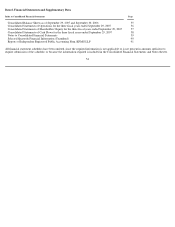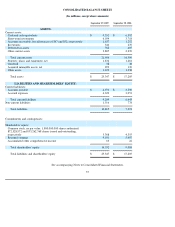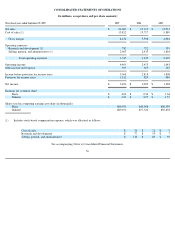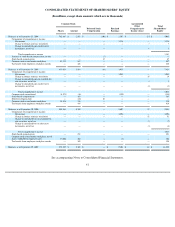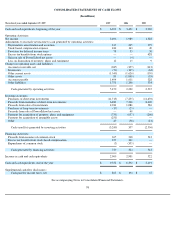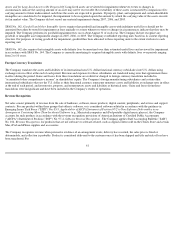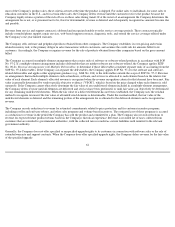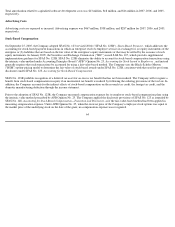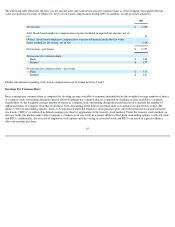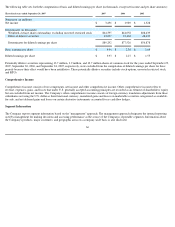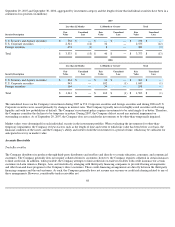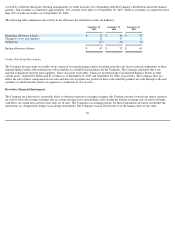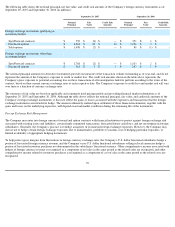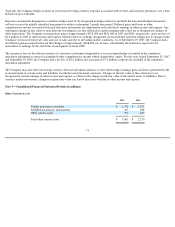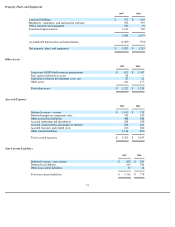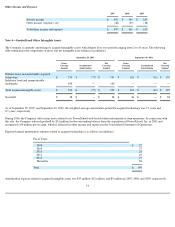Apple 2007 Annual Report Download - page 68
Download and view the complete annual report
Please find page 68 of the 2007 Apple annual report below. You can navigate through the pages in the report by either clicking on the pages listed below, or by using the keyword search tool below to find specific information within the annual report.
Total amortization related to capitalized software development costs was $13 million, $18 million, and $16 million in 2007, 2006, and 2005,
respectively.
Advertising Costs
Advertising costs are expensed as incurred. Advertising expense was $467 million, $338 million, and $287 million for 2007, 2006, and 2005,
respectively.
Stock-Based Compensation
On September 25, 2005, the Company adopted SFAS No. 123 (revised 2004) ("SFAS No. 123R"), Share-Based Payment , which addresses the
accounting for stock-based payment transactions in which an enterprise receives employee services in exchange for (a) equity instruments of the
enterprise or (b) liabilities that are based on the fair value of the enterprise's equity instruments or that may be settled by the issuance of such
equity instruments. In January 2005, the Securities and Exchange Commission ("SEC") issued SAB No. 107, which provides supplemental
implementation guidance for SFAS No. 123R. SFAS No. 123R eliminates the ability to account for stock-
based compensation transactions using
the intrinsic value method under Accounting Principles Board ("APB") Opinion No. 25, Accounting for Stock Issued to Employees , and instead
generally requires that such transactions be accounted for using a fair-value-based method. The Company uses the Black-Scholes-Merton
("BSM") option-pricing model to determine the fair-value of stock-based awards under SFAS No. 123R, consistent with that used for pro forma
disclosures under SFAS No. 123, Accounting for Stock-Based Compensation .
SFAS No. 123R prohibits recognition of a deferred tax asset for an excess tax benefit that has not been realized. The Company will recognize a
benefit from stock-based compensation in equity if an incremental tax benefit is realized by following the ordering provisions of the tax law. In
addition, the Company accounts for the indirect effects of stock-based compensation on the research tax credit, the foreign tax credit, and the
domestic manufacturing deduction through the income statement.
Prior to the adoption of SFAS No. 123R, the Company measured compensation expense for its employee stock-based compensation plans using
the intrinsic value method prescribed by APB Opinion No. 25. The Company applied the disclosure provisions of SFAS No. 123 as amended by
SFAS No. 148, Accounting for Stock-Based Compensation—Transition and Disclosure, as if the fair-value-based method had been applied in
measuring compensation expense. Under APB Opinion No. 25, when the exercise price of the Company's employee stock options was equal to
the market price of the underlying stock on the date of the grant, no compensation expense was recognized.
64


